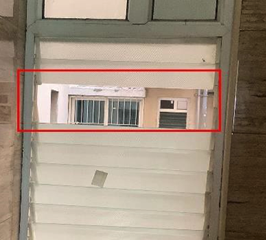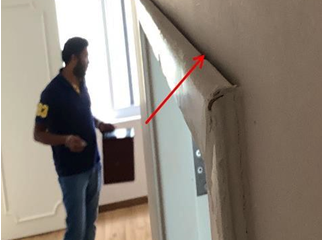Cracks in walls are not just ugly, but they can also be warning signs for serious problems with the foundation of the house. There can be multiple reasons for cracks in the home. In the majority of cases small, hairline cracks in walls, ceilings and plaster can be a sign of simple expansion and contraction movement within your home during the “settling down” period (immediately after construction of house), humidity, temperature and the way that 100+ different materials in your home react to this, all expanding and contracting at different times and different rates. At the other end of the scale there could be bigger problems with foundations where they need underpinning in some way.
Most common causes of cracks:
-
House Settling Cracks
Settling is a term used to describe the natural changes that will take place in a foundation due to time and weather.
In newly constructed houses, we have heard about a certain period of ‘settlement’ that the house has to go through whereby effectively everything “settles down” over a period of time. But sometimes a home can settle too much, if your home was not built on a good foundation, it could be settling unevenly or even sinking too much. When this happens, deep cracks in your home can form as the settling process pulls at your walls.
-
Bad Foundation
If you are seeing crooked doorways, uneven floors or big cracks in the walls which imply that the house has serious problems with its foundation. The visible cracks in the walls are one of the primary indicators that your foundation has been compromised.
So, if you suspect there are problems with your home’s foundation, you must bring in a professional before the situation gets any worse. A good Home Inspector can give you precise information on how worse is the situation.
-
Temperature Change
Different materials used for the house construction are subject to initial shrinkage and/or subsequent expansion or contraction due to temperature and moisture change. This movement leads vertical cracks in the walls, which is often the case. They are commonly seen above the window and door openings.
-
Too much load
Sometimes cracks can develop due to heavy loads places on floors or ceilings. For example, placing a very heavy lighting fixture can cause cracks to appear on your ceiling.
Types of Cracks
Vertical Cracks
 If the crack is vertical and starts near the apex where the wall and ceiling meet, it might be a sign that it was created when the foundation settled after construction. Vertical cracks run the same direction as the wall.In the case of major vertical cracks running on exterior walls of your property (minimum of 3mm in width) this can indicate serious settlement issues or foundation problems. These are normally caused by a drop in a section of the foundation that then causes a property or building to effectively pull away from the rest of the structure creating the crack.
If the crack is vertical and starts near the apex where the wall and ceiling meet, it might be a sign that it was created when the foundation settled after construction. Vertical cracks run the same direction as the wall.In the case of major vertical cracks running on exterior walls of your property (minimum of 3mm in width) this can indicate serious settlement issues or foundation problems. These are normally caused by a drop in a section of the foundation that then causes a property or building to effectively pull away from the rest of the structure creating the crack.
Horizontal Cracks
 If the crack is horizontal or runs at a jagged 45-degree angle, it might mean there’s a more serious problem such as severe foundation shifting or water damage. Surface-blemish cracks can often be repaired with drywall putty
If the crack is horizontal or runs at a jagged 45-degree angle, it might mean there’s a more serious problem such as severe foundation shifting or water damage. Surface-blemish cracks can often be repaired with drywall putty
, sanding tools and a fresh coat of paint. More severe cracks usually require professional help to determine the exact cause and might include some reconstruction to prevent further damage. The bad news : You probably need a whole new foundation.
When to bring in a Home Inspector 
If you notice cracks in your walls and you are trying to inspect them or struggling to find out how to determine what is causing them, you are left scratching your head.
It is time to connect with a professional Home Inspector – that is what they are there for! In most of the cases, only a professional can figure out why the cracks have appeared.
A qualified Home Inspector can tell you whether the cracks are purely cosmetic or a sign of a deeper problem. Structural problems don’t just resolve by themselves – they worsen and become more expensive for you. Not only that, but you could be putting yourself and your family at risk by living in a home that isn’t sound. Bring in a pro – you are better safe than sorry.


